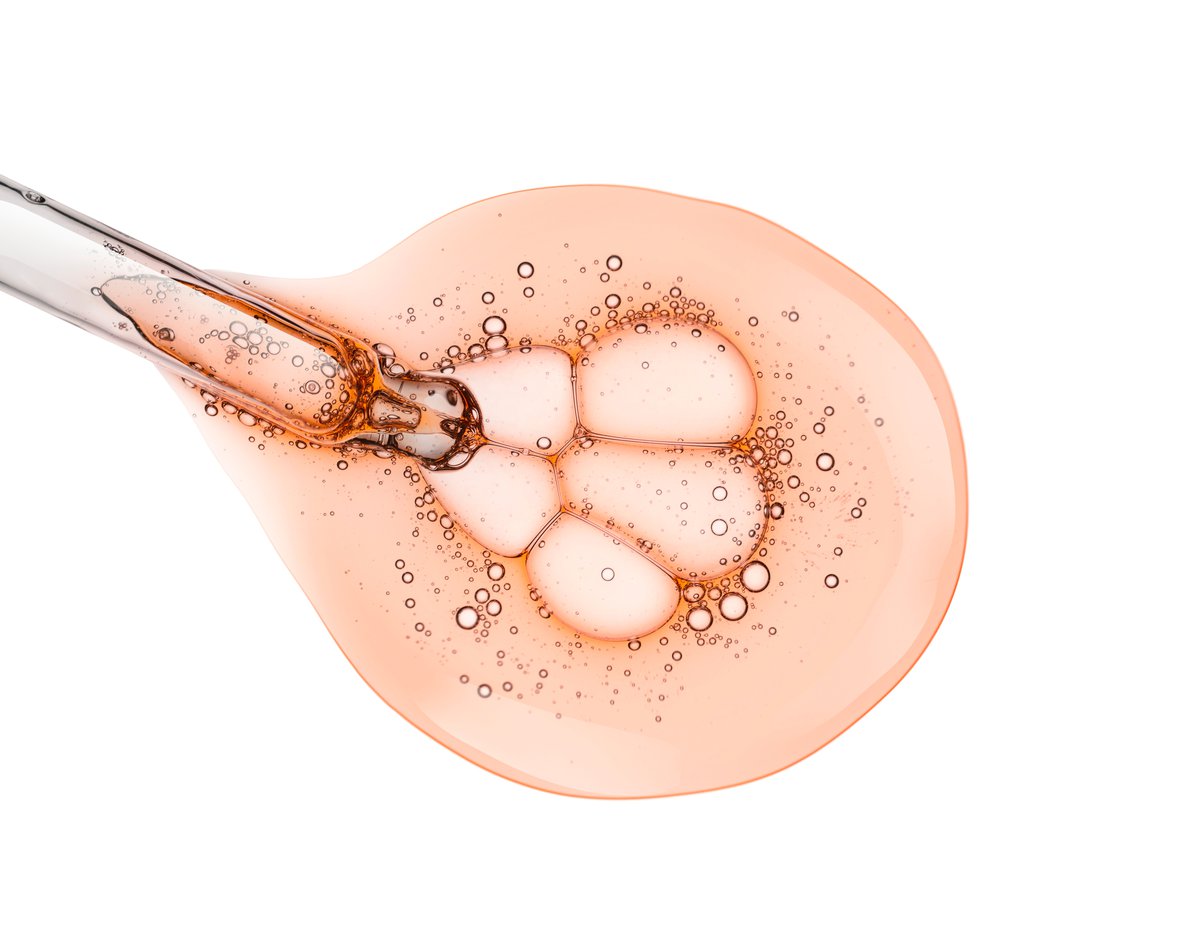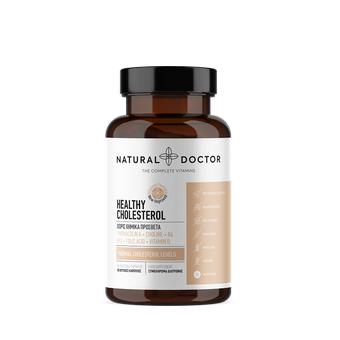Maintaining normal cholesterol levels with monacolin K

Cardiovascular disease is the most common cause of death in the world's adult population and is often related to a process called atherosclerosis. Atherosclerosis is a pathological condition during the development of a substance, plaque, accumulates in the walls of the arteries.
Plaque narrows the arteries, making it difficult for blood to flow normally, increasing the risk of heart attack, stroke, and peripheral artery disease.
There are numerous risk factors related with cardiovascular disease, and even though some cannot change, such as family history, others can be adjusted with appropriate treatment, such as abnormal blood lipid and sugar levels, smoking, obesity, and high blood pressure.High levels of lipids in the blood are related to cholesterol.
Cholesterol is a sterol biosynthesized in all animal cells and is a critical structural component of their cell membranes. It belongs to the class of lipids and also serves as a precursor compound for the biosynthesis of steroid hormones, bile acid, and vitamin D.
It is a substance necessary for the proper functioning of the human body. Still, when cholesterol is in excess in the blood, it has negative consequences, as it is deposited on the walls of the arteries, creating atheromatous plaque.
Therefore, elevated blood cholesterol levels lead to atherosclerosis. The above mechanism is caused by LDL cholesterol, which can accumulate in the vessels.Elevated LDL is one of the main risk factors for cardiovascular disease, and evidence has proven that for a 1% reduction in its levels, the risk of coronary heart disease is also reduced by 1%.
HDL-cholesterol, on the other hand, transports LDL from the periphery to the liver, thereby clearing the vessels from it. An essential step in cholesterol biosynthesis, the conversion of HMG-CoA to mevalonate is catalyzed by the enzyme 3-hydroxy-3methyl-glutaryl-CoA (HMG-CoA) reductase.
Usually, in mammalian cells, this enzyme is competitively inhibited by cholesterol derived from LDL-cholesterol degradation via LDL receptors and oxidized cholesterol species. Antagonistic reductase inhibitors affect the expression of LDL receptors in the liver, which increases the catabolism of plasma LDL and decreases plasma cholesterol concentration.
This enzyme and the reaction it catalyzes are the target of antihypercholesterolemic cholesterol-lowering drugs known as statins. Statins replace this enzyme and slow down the cholesterol production process.
Liver enzymes recognize the reduced cholesterol production and respond by creating a protein that increases the production of LDL receptors. These receptors migrate to liver cell membranes and bind, passing LDL and VLDL, which enter the liver and are digested, further reducing cholesterol levels.
Like high lipid levels, high homocysteine levels in the blood (hyperhomocysteinemia) are considered a marker of cardiovascular disease, which can lead to ischemic injury. (14) Homocysteine is an α-amino acid that is biosynthesized from methionine by removal of its terminal methyl group.
It is usually recycled to methionine or converted to cysteine with the help of specific B vitamins. However, hyperhomocysteinemia appears to promote atherogenesis and atherothrombosis through several mechanisms.
For example, homocysteine metabolism generates reactive oxygen species that can directly injure the endothelium. Furthermore, homocysteine inhibits nitric oxide synthase activity, leading to endothelial dysfunction.
Other mechanisms attributed to hyperhomocysteinemia include:
- Deregulated protein and DNA methylation.
- Abnormal proliferation of vascular smooth muscle cells.
- Increased lipid peroxidation.
Therefore, hyperhomocysteinemia is a risk factor for coronary heart disease, which occurs when atherosclerotic plaque blocks blood flow in the coronary arteries, which supply the heart with oxygenated blood.
Action of monacolin K
Our nutritional supplement, Healthy Cholesterol, aims to maintain normal cholesterol levels and normal lipid and homocysteine metabolism to reduce the risk of heart disease.
A key ingredient in Healthy Cholesterol is Red Fermented Rice (RYR), a nutrient produced by fermenting rice with the fungus Monascus purpureus and used for centuries in Asian foods and medicines.
It is rich in bioactive components, among which are monacolins, inhibitors of HMG-CoA reductase (HMG-CoAR).
RYR, in addition to monacolins, contains compounds with potential lipid-lowering properties, including plant sterols, isoflavones, monounsaturated fatty acids, and other components such as fatty acids, pigments, and citrin.
Monacolin K is the most abundant monacolin in RYR, and it exists as both a lactone and a hydroxy acid in a ratio that depends mainly on the pH value. At low pH, the lactone form predominates, while in neutral and basic conditions, the active hydroxy acid form predominates.
Monacolin K in the lactone form is identical to lovastatin, a hypocholesterolemic drug approved in the European Union, and structurally similar to that of the limiting enzyme 3-hydroxy-3methyl-glutaryl-CoA reductase of the cholesterol synthesis pathway.
Essentially, monacolin K inhibits HMGR in a reversible competitive manner, thereby inhibiting cholesterol synthesis, as an interruption of the conversion of HMG-CoA to mevalonate can disrupt hepatic cholesterol synthesis.
Additionally, recent data indicate that RYR increases hepatic bile acid excretion, thereby increasing the need for intrahepatic cholesterol availability for use.
Therefore, plasma cholesterol levels will be reduced through two mechanisms: a reduction in hepatic synthesis of cholesterol and a lowering of circulating cholesterol from the plasma for use by the liver.
Studies suggest that RYR may be a safe alternative to statins for the treatment of hypercholesterolemia or hyperlipidemia and may be particularly useful in statin-intolerant patients.
The European Food Safety Authority approved RYR for maintaining normal cholesterol levels and recommends the consumption of monacolin K 10 mg per day for adults in the general population, a dose also chosen in our Healthy Cholesterol product.
Monacolin K is extensively metabolized by the CYP3A4 enzyme, so its inhibitors or inducers may cause changes in its plasma concentrations, suggesting a possible interaction with drugs primarily metabolized by this pathway.
For this reason, concomitant use of CYP3A4 inhibitors with monacolin may increase the risk of myotoxicity and rhabdomyolysis.
Therefore, monacolin K may cause potential drug interactions and should not be consumed in combination with drugs containing itraconazole, ketoconazole, erythromycin, clarithromycin, telithromycin, HIV protease inhibitors, ciclosporin, trazodone or with grapefruit juice (≥0.2 L/day) ).
Choline
In addition to red fermented rice, a key component of Healthy Cholesterol to maintain normal cholesterol and homocysteine levels is choline. Choline is a fundamental nutrient for humans and must be obtained from the diet as, while humans produce choline de novo, production is generally insufficient.
Choline is a nutrient with an amino acid-like metabolism. The mechanism of action of choline involves improving the metabolism of cholesterol in the digestive system and its transport through the circulatory system.
Instead of blocking cholesterol absorption in the digestive tract like statins and RYR, choline acts as an emulsifier, breaking down cholesterol and homocysteine into tiny molecules and keeping them in suspension, preventing them from sticking to artery walls and creating atherosclerotic plaque.
Magnesium
The Healthy Cholesterol supplement also includes magnesium in the form of magnesium oxide. Magnesium deficiency and lower magnesium concentration in the blood are common findings in patients with significant risk factors such as hyperlipidemia.
Magnesium, in correct concentrations in the cells, inhibits the function of some enzymes, resulting in the reduction of cholesterol. More specifically, magnesium is essential for the activity of cholesterol lecithin acyltransferase and lipoprotein lipase, which lowers LDL levels and increases HDL-cholesterol levels.
Micronutrients, especially vitamins, play an essential role in cardiovascular diseases. Supplemental vitamin intake may reduce the burden of cardiovascular disease by acting on the inflammatory and oxidative response starting in the early stages of atherosclerosis, when vascular damage is still reversible or, at least, can be slowed.
The importance of B vitamins is particularly evident in homocysteine metabolism, as these molecules play a crucial role as enzyme cofactors.
In particular, the combination of folic acid, vitamin B6, and vitamin B12, according to clinical studies, effectively reduces elevated plasma homocysteine concentrations, thus reducing the risk of atherosclerosis. Healthy cholesterol contains 5mg of vitamin B6, 400 mcg of folic acid, and 15 mcg of vitamin B12.
Healthy cholesterol
Finally, an equally important Healthy Cholesterol vitamin for managing blood cholesterol levels is cholecalciferol, the form of vitamin D called D3 that is synthesized in the skin from 7-dehydrocholesterol during ultraviolet (UV-B) radiation.
7-Dehydrocholesterol is part of the metabolic pathway that controls cholesterol synthesis in human cells.
Upon absorption of ultraviolet radiation, which may be ionizing, 7-dehydrocholesterol is converted into provitamin D3, which, in turn, due to its molecular instability, is converted into cholecalciferol.
Vitamin D has recently been found to modify the mechanisms of atherosclerosis as it helps to lower total cholesterol, triglycerides, and LDL cholesterol levels while increasing HDL cholesterol levels.
Cardiovascular diseases influence the heart and blood vessels and are associated with atheroma. It is a significant cause of mortality, and hyperlipidemia and hyperhomocysteinemia are risk factors.
All the components of Healthy Cholesterol contribute to reducing high levels of cholesterol and homocysteine in the blood and their maintenance through various mechanisms.



